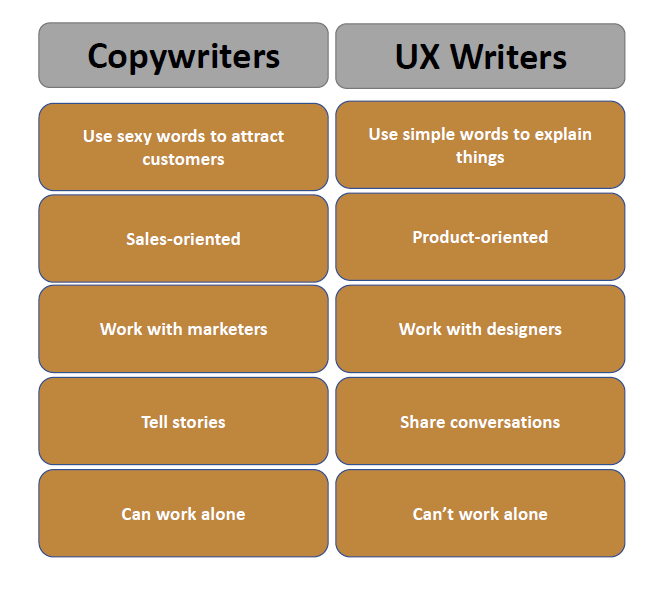UX writing – the not so new kid on the block

By Milan Jovanovic (UX design expert)
The practice of UX writing has been around for a few years. Yet, few people outside the technology and writing industry know what it is.
UX writing has evolved into a specialist job in the past few years with UX writers now being an integral part of design teams. But what do UX writers actually do? How can they help you with your digital communication? And most importantly: why should you invest in UX writing?
What is UX writing?
UX stands for User Experience and UX writing is essentially writing for screens. Whether it is for websites, landing pages or apps: a UX writer’s job is to help users accomplish a specific goal online. This can be to sign up for a course, to buy a product, to make a reservation or to simply find the answer they were looking for. An omnipresent mantra for UX writers is to always be clear, concise and useful in their writing – and you will later see why this is so important.
What’s crucial to understand is that UX writers don’t just come in once a design is finalised to do their job as writers and fill in the blanks wherever copy is needed. They are involved in the whole design process to craft the copy throughout the entire digital experience of the user’s journey: from the moment someone lands on a website or app to the moment when they complete what they came onto the platform for in the first place.
The importance of your brand voice
One of UX writing’s main goals is to maximise interaction and help guide users. But it also comes down to establishing trust and strengthening a brand’s voice by choosing the right words for each step of a user’s journey.
Your brand’s voice is how it would speak if it were a person. It’s essentially your brand’s personality and defines how others view your product, service or company in general. UX writers play an integral part in ensuring that the voice and tone are always on brand on the various communication channels you may use. Here are just some examples of how a UX writer will help you with branding tasks:
- Doing user research to help define your target audience
- Creating user personas for your brand
- Helping refine your vision and writie a mission statement
- Drafting verbal guidelines
- Conducting a content audit to ensure all existing content is up to date and aligned with the brand identity
How is UX writing different from copywriting?
UX writing and copywriting – what’s the difference between the two? Both write words for online content. True, but both their approaches as well as their ultimate goals are quite different.
Copywriters are often part of a marketing, advertising or branding team. They use salesy and catchy words because their goal is to write words that attract customers and ultimately convert into a transaction of sorts. They will write texts such as ads, landing pages, social media posts, blogs or email campaigns.
UX writers on the other hand use simple and helpful words because they want to assist users on their way to complete a specific task. They are usually part of a design or product team and specialise in writing microcopy. Read on to learn more about what some of the key elements of microcopy are.
This illustration summarises some of the main differences between copywriters and UX writers:

What are elements of UX writing?
Now that we have a bigger picture, let’s take a closer look at what UX writing looks like in practice. Most of the copy within UX writing falls into the “microcopy” category. They are the small but important snippets of text that users don’t often consciously notice but that essentially determine how successful the user journey is.
Here are some elements of UX microcopy:
- Buttons and Call to actions (CTAs)
- Pop-ups
- Sign-up forms
- Labels and placeholder texts
- Navigation
- Waiting time / loading indicators
- Headings
- Fine print
- Captions
- Empty states
- Error messages
Even if each of these elements may seem small or insignificant, they make up what makes or breaks a successful user experience.
And it becomes clear why it’s so important to always be clear, concise and useful. Space and word count are usually very limited for any piece of microcopy. There is no room for even the slightest possibility of a text being misunderstood. That’s why every single word needs to be chosen carefully. And last but not least, each element needs to have a clear purpose and must always be useful.
With this brief introduction into UX writing, the benefits speak for themselves. UX writing can help elevate your business success with websites and landing pages that convert and with apps that give users what they need.
Still unsure? Here are just some of the reasons why an investment in UX writing will pay off for your business.
Good UX writing:
- Makes for happy customers
- Drives sales, conversions and increases your overall ROI
- Reduces customer enquiries and complaints
- Strengthens brand awareness
- Builds trust
Watch this space for more content on UX and other writing services or get in touch with us to see how our wide range of tailormade language solutions can help with your business success.
-
Brand Voice
UX Writing

